Netatmo Smart Thermostat Review
Netatmo Smart Thermostat
Clever smart heating with Siri and Amazon Echo support
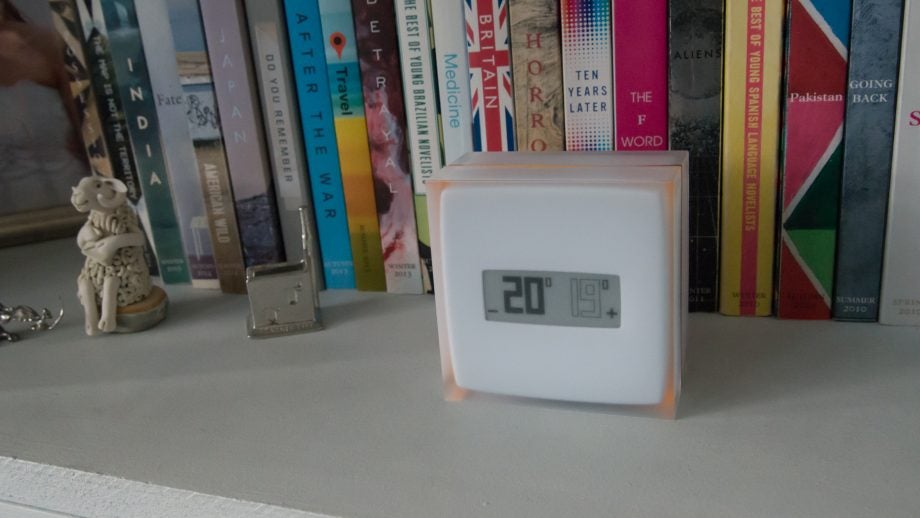
Verdict
Pros
- Simple to install
- Flexible scheduling
- Easily expandable
Cons
- Android app unresponsive on occasion
- Geofencing isn't integrated
Key Specifications
- Review Price: £149.00
- Wired and wireless thermostat installation
- Always-on E Ink screen
- Apple HomeKit, Amazon Echo and IFTTT support
- Integrates with Netatmo Weather Station
- Android, iOS and web apps
What is the Netatmo Smart Thermostat?
Smart thermostats can be rather complicated to set up, but Netatmo has designed its Smart Thermostat to be incredibly easy to install. It’s also one of the most flexible, with support for Apple HomeKit, Google Home Amazon Echo, and expansion available via a range of additional Netatmo products, including multiroom control via the new Netatmo Smart Radiator Valves.
Related: Smart thermostats explained
Netatmo Smart Thermostat – Design and Build
The Netatmo Smart Thermostat comes as two components: a relay and the thermostat. Both have been designed by Stark, and they’re attractive and rather understated boxes, intended to blend into your home.
The relay is a small white box, with a light in the centre that glows when your heating is on. It’s unobtrusive, although you’re unlikely to see it, since the relay is most likely to be tucked away with your boiler. The relay also provides the wireless internet connection for the thermostat.

It’s the battery-powered thermostat that’s really attractive: this small cube (83x83mm) can either be wall-mounted or attached to a stand, so you can place it where you want or even move it around your home. Netatmo ships the thermostat with five colour “accent” strips: white, red, orange, green and blue, enabling you to match the thermostat to your decor.
Netatmo Smart Thermostat – Features
Cleverly, the Smart Thermostat has two modes of installation. First, and simplest, is replacing an existing two-wire thermostat, connecting the control cables to the Netatmo Smart Thermostat’s built-in relay. In this mode, the relay unit isn’t connected to your boiler and needs to be plugged into a wall socket via the provided adapter to provide the internet connection.
The second option is to wire the relay into the boiler via the bundled boiler connector kit. In this mode, the relay takes power from the boiler and uses its own relay to switch your heating on and off. The thermostat unit becomes completely wireless and communicates directly with the relay. Given that the relay has to be physically connected to your boiler using mains power, you may want to get this installed by a professional .
Once the relay and thermostat are in place, setup moves to the app (Android, iOS and Windows Phone), which takes you through connecting to your wireless network (2.4GHz only) and setting up a Netatmo account, if you don’t already have one.
A simple questionnaire asks you when you get up, go to work, get back home and go to sleep, automatically setting a schedule for you. It’s easy enough to change them manually on your phone, although my Android version would occasionally refuse to let me change the schedule until I restarted the app.
As with other smart heating systems, manual scheduling lets you establish different settings for each day. Scheduling lets you set time periods and, for each, which heating profile to use. By default, there are three profiles: Comfort (19C); Night (17C); and Eco (16C) – although you can create your own or modify the temperatures used for each.
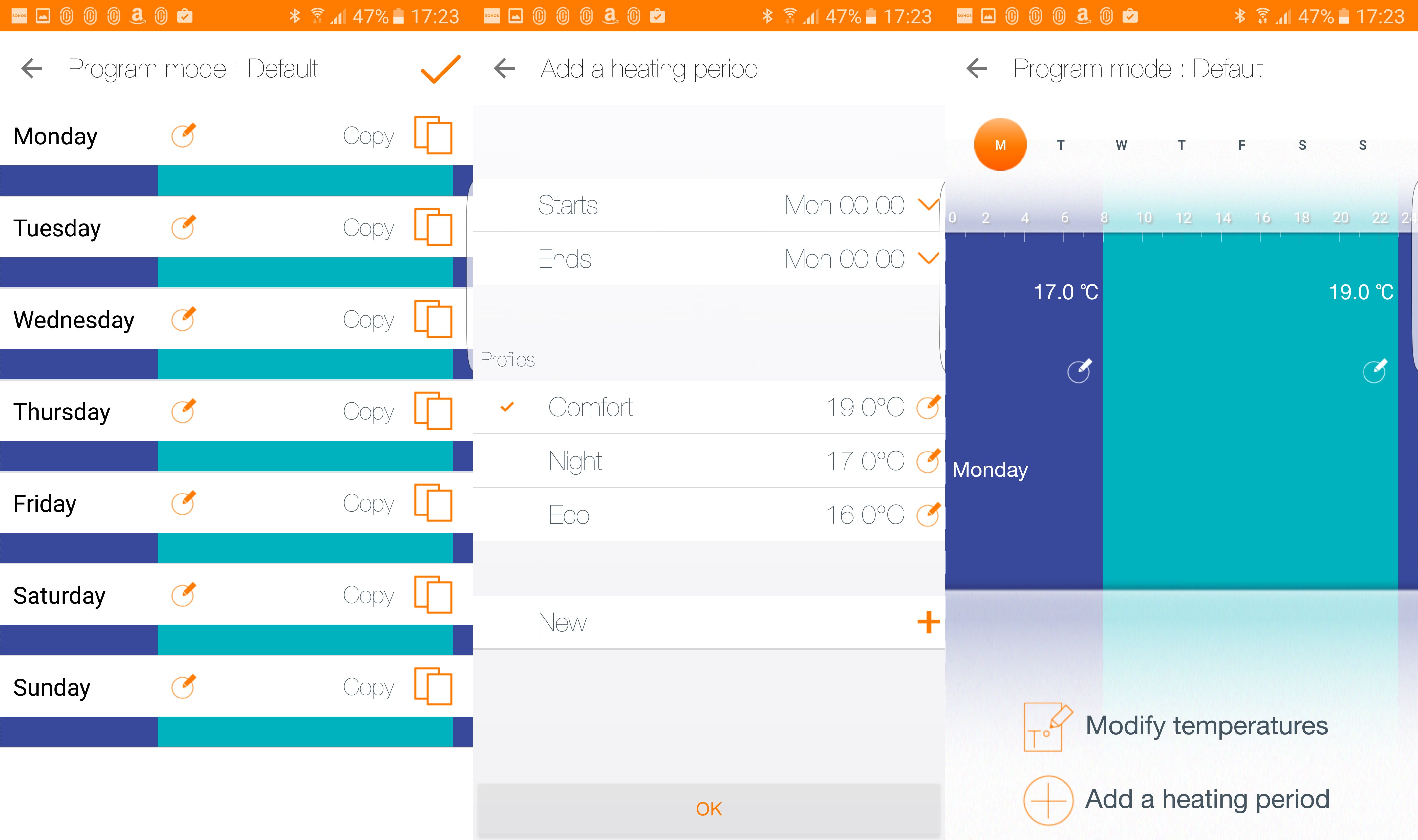
Profiles make setting and changing your schedule really quick. Plus, if you find your house too hot or too cold, you can adjust a profile and the new temperature is applied to every period that uses it.
In addition, there are two special modes: Away and Frost-Guard. Both set a constant temperature until you switch them off. Away is set to 12C by default and should be used when you’re out, but want to stop your house from getting too cold. Frost-Guard is set to 7C, and is for use when you’re away for longer periods. You can override the temperature setting for both modes.
The Netatmo Smart Thermostat is heating-only, so is ideally combined with a combi boiler. If you have a separate hot water tank, you’ll need to leave your old controls in place, or use a different smart heating system, such as the Tado Smart Thermostat.
Netatmo Smart Thermostat – Performance
Using the mobile app or web app is simple, with the main interface aping the physical thermostat. From the app you can quickly dial the temperature up or down; doing this sets the change, known as a setpoint, to last for the default time – which is three hours by default.
When making a temperature change, you can also adjust the slider to make the change last for a longer or shorter period.
You can perform the same action from the thermostat by clicking the top to increase and the bottom to decrease temperature. You can place the thermostat horizontally, too: right-click is temperature up and left-click is temperature down.
However, since the thermostat doesn’t have a touchscreen, temperature changes last for the default setpoint duration only. The Tado Smart Thermostat offers greater control; it can set thermostat changes to last for a set period, forever or until the next period.
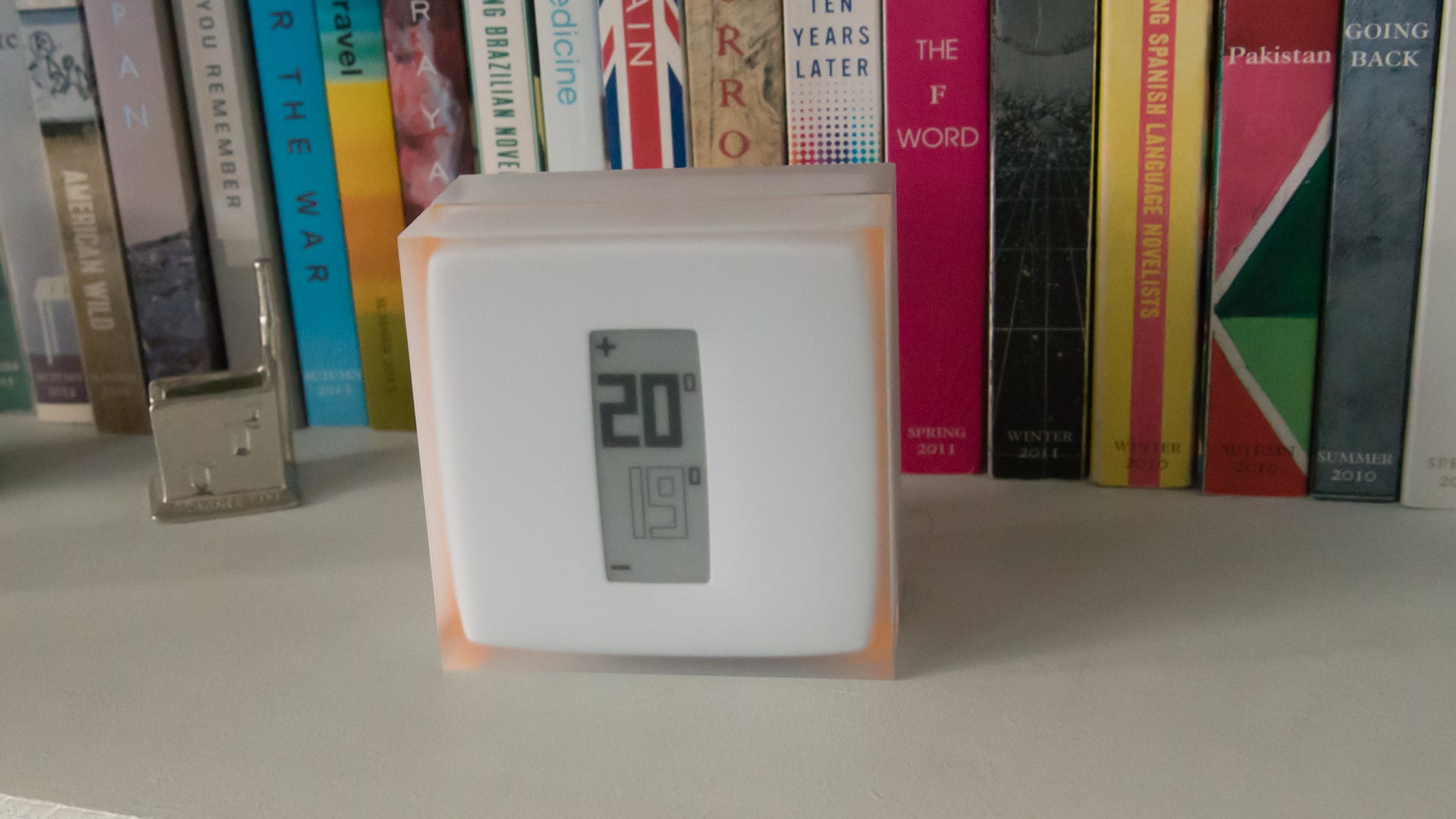
The thermostat’s clear E Ink screen displays the current and set temperatures. Using E Ink means that this information is onscreen all of the time, using little power (the three AAA batteries should last one year). However, the display is hard to read in a dark room since it isn’t illuminated.
A neat feature in the Netatmo app is the option to set a date and time for Away mode or Frost-Guard modes to end. If you’re going on holiday, for example, you can pre-set your heating to turn back on when you return.
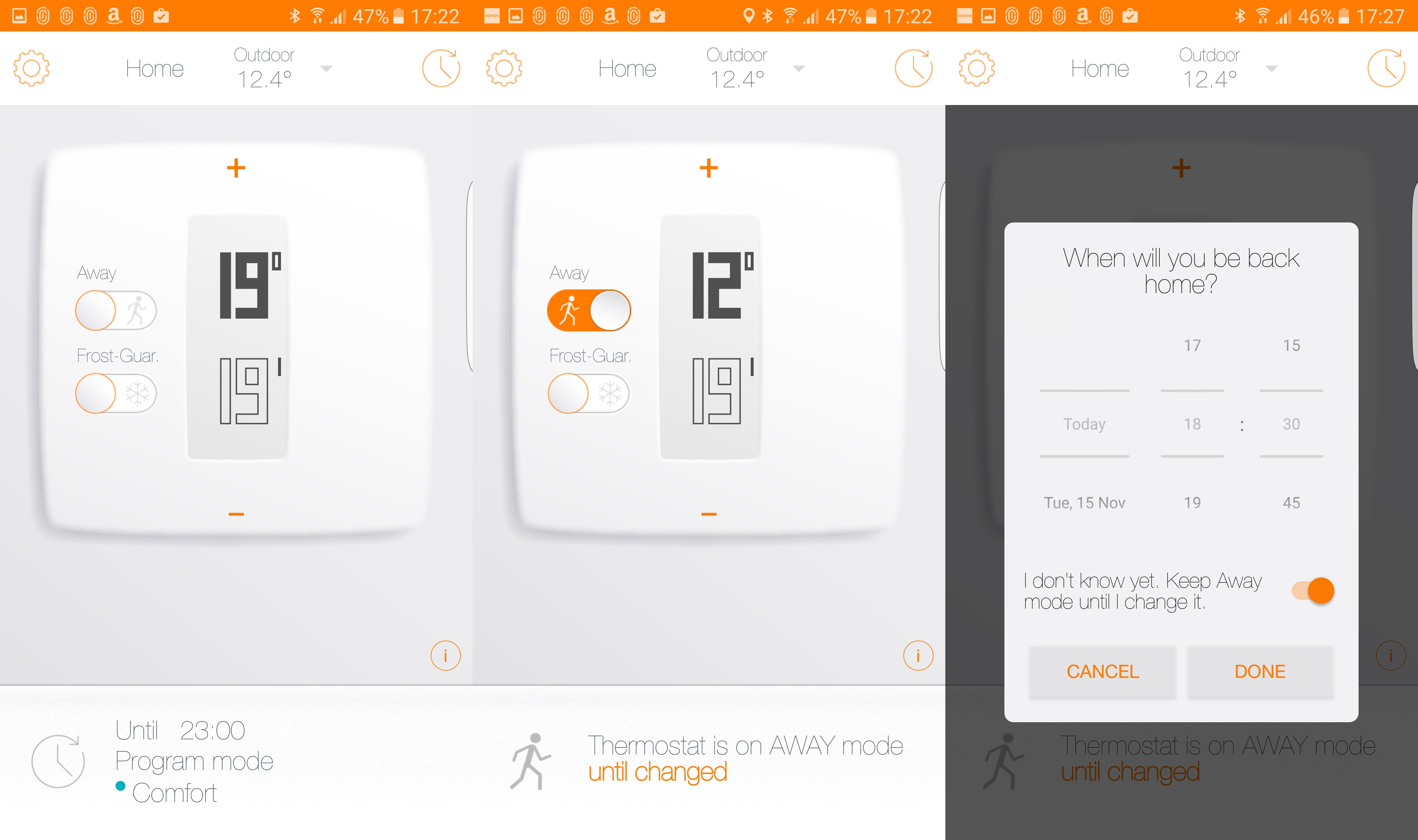
Sadly, Netatmo doesn’t have any geofencing built in, so the Smart Thermostat can’t turn on and off automatically when you go out. However, there is IFTTT support, so you can implement this feature using the Location service (good for one user) or via the Life360 app (good for an entire house, since it tracks everyone’s location).
Whichever option you go for, it makes configuring the thermostat a little more fiddly than with either the Honeywell Lyric T6 or Tado Smart Thermostat, both of which have geofencing built in.
The Smart Thermostat uses some advanced heating algorithms, designed to save money – up to a 37% cut in energy bills – to help keep your house from getting too hot or cold.
Netatmo could make the available options a little easier to understand, though: hysteresis algorithm and proportional-integral-derivative (PID) algorithm are hardly descriptive. While the manual explains what each one does, they’re a bit wordy.
In short, hysteresis cuts the boiler off once your house is within the threshold of the set temperature (by default 0.2C). Even so, hot radiators can push your heating beyond the set point. PID is smarter, and learns how your home heats up and how long it takes, so it can cut off the heating at the right point so that your home doesn’t exceed the set temperature. PID constantly updates and learns, making it better over time. In my tests, my house barely exceeded the set 19C when PID was used.
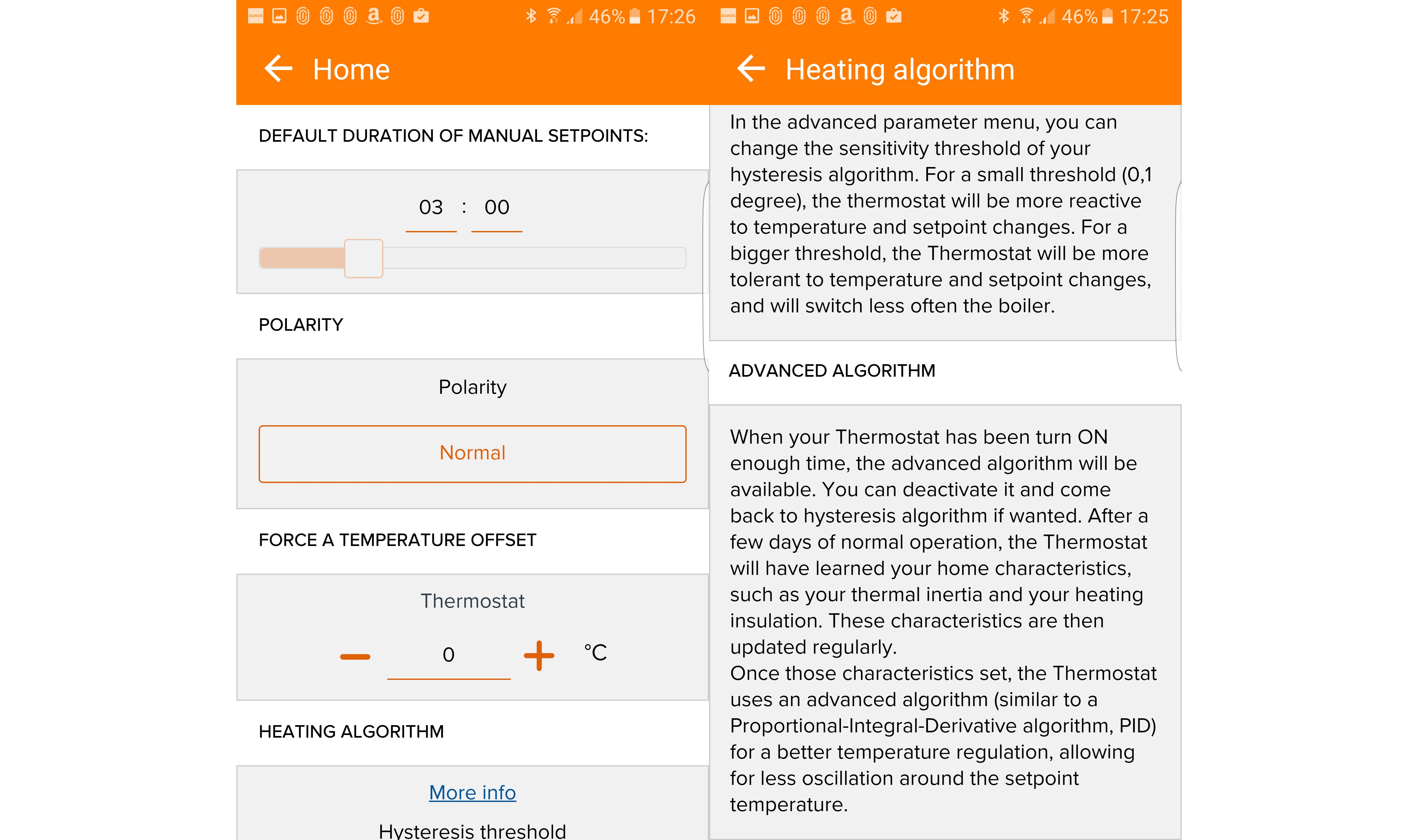
To aid with heating, the Netatmo Smart Thermostat also takes into account the local outdoor temperature, so that it knows when to turn on the heating: earlier, when it’s really cold; later, when it’s warmer. The temperature can be pulled from the internet, using your home’s location, although more accurate readings can be taken from a Netatmo Weather Station if you have one linked to the same account.
Netatmo Smart Thermostat – Smart Radiator Valves
Netatmo has expanded into multi-room heating with the launch of its Smart Radiator Valves (£70 each). These units replace your existing thermostatic radiator valves (TRVs), giving you individual temperature control over each room. You can expand the system one Radiator Valve at a time. It makes sense to start with the most-used rooms, so you’ve got finer control over their temperature.
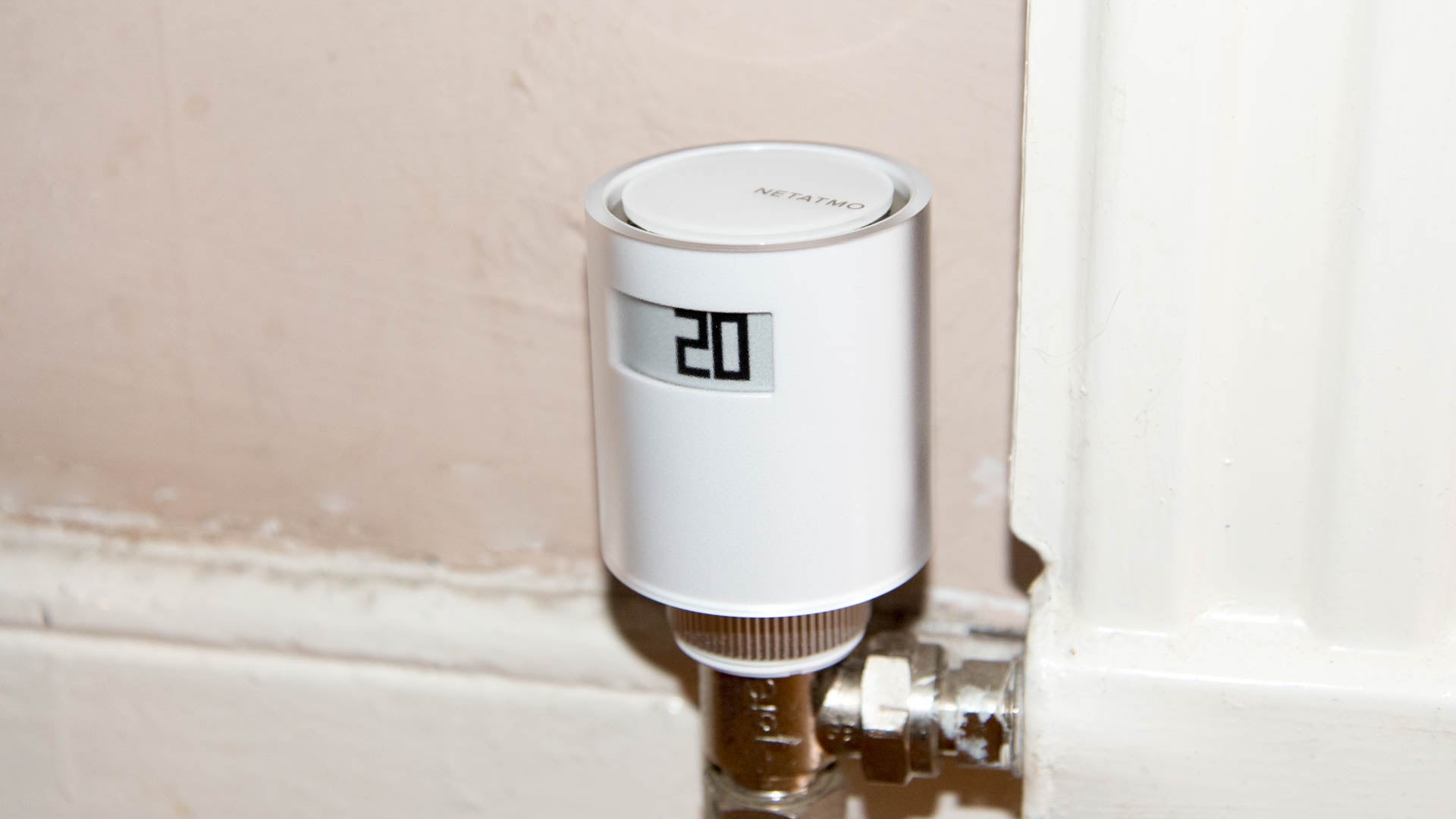
Netatmo ships the Smart Radiator Valves with plenty of adaptors in the box, so you should have no problem fitting them to your radiators. It took me a matter of minutes to fit my test valves.
Once you’ve attached a valve, it needs to be added into your existing Netatmo system via the smartphone app. The Smart Radiator Valves need to be placed in a room, but you can have multiple valves per room, which is handy for those that have multiple radiators. You can also place the valves into the same room as the main thermostat, letting it act as a remote temperature sensor; this is handy if you’ve got a radiator behind furniture and the Smart Radiator Valve is giving incorrect heat readings.
As with the main Thermostat, the smart-looking Radiator Valves have an E Ink screen that shows the current temperature. Twist the Valve’s head, and you can increase or decrease the temperature for three hours, giving a handy boost if you’ve got one cold room. Dive into the app, and you get more control, and you can choose how long you want each temperature change to last.
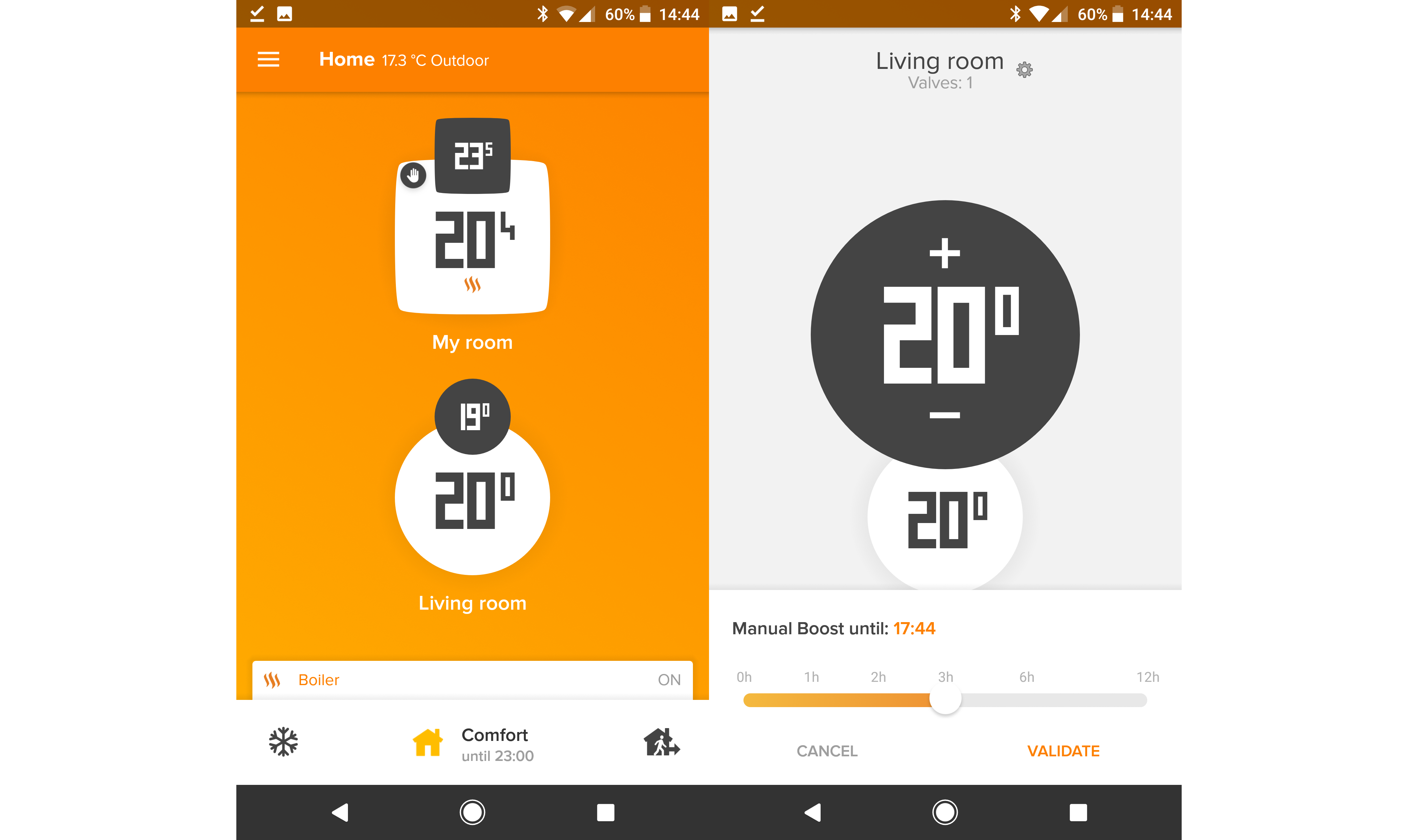
Scheduling becomes more complicated when Smart Radiator Valves are involved. Netatmo applies one schedule to every room, setting the profiles you choose at the times you choose. You can adjust a profile’s temperature for each room, say having the Comfort mode set to 19C for your living room and 18C for your bedroom. This isn’t as flexible as being able to set a dedicated schedule for each room, as you can do with both Evohome and Tado.
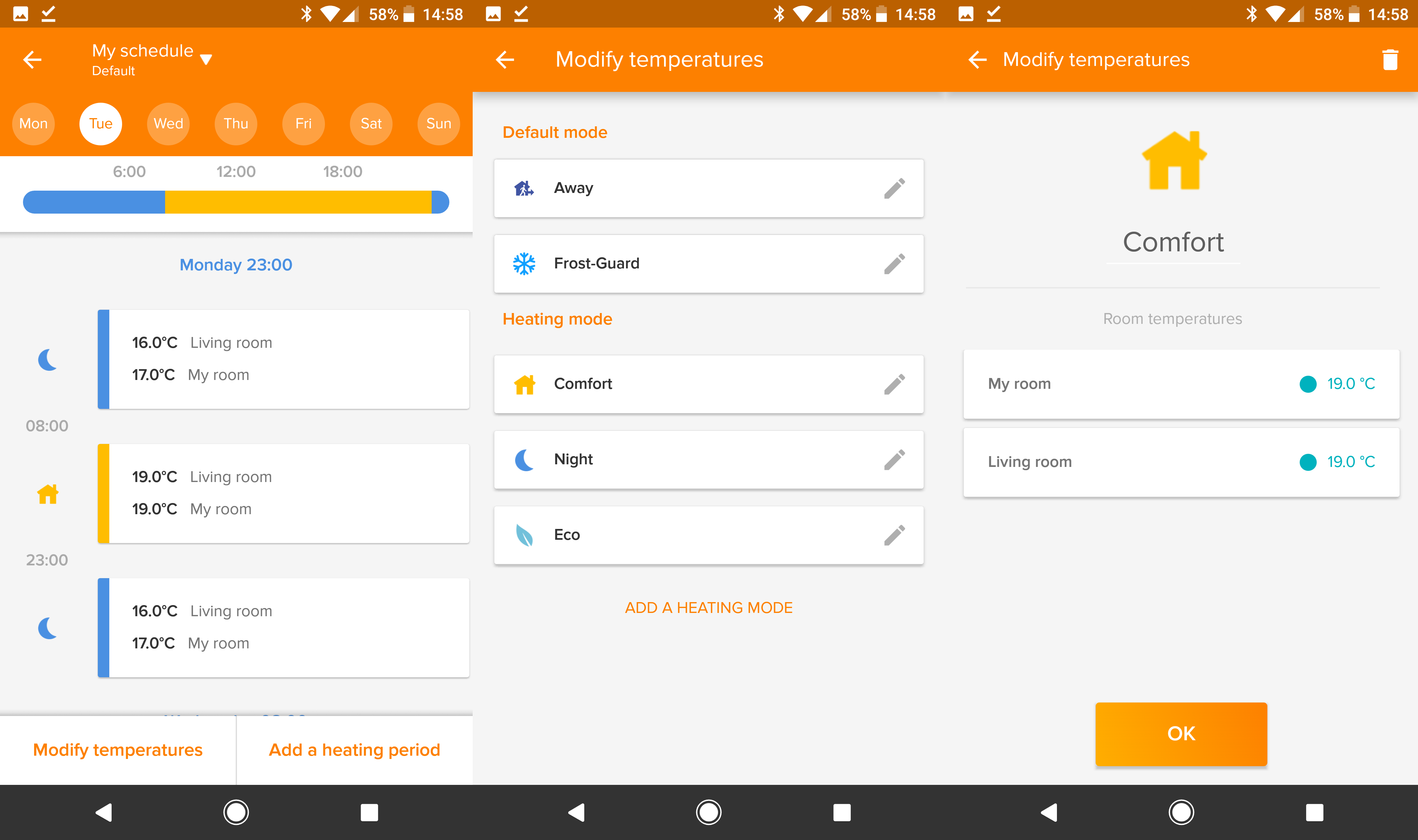
Netatmo Smart Thermostat – HomeKit, Siri and Echo
Netatmo’s Smart Thermostat is one of the best connected. Setting up HomeKit and the Apple Home app is easy, since the pairing code required pops up on the thermostat’s screen.
For other devices, the pairing code is printed on a sticker inside the box. Using Apple’s Home app is clunky and Netatmo’s own app is far better. However, voice control via Siri is neat, and you can ask for a set temperature or to increase or lower temperatures by a set amount. Results are almost instant, too. Apple Home support has been updated, and both the app and Siri support the Radiator Valves, so you can control temperature in each room individually.
Amazon Echo (Alexa) support is great to see, too. This offers the same voice commands as with HomeKit, and temperature changes happen just as quickly. A recent update has added support for the Smart Radiator Valves, so you can use your voice to control the temperature in each room, or even ask what the temperature in one zone is.
Google Assistant support for the Google Home has been added, too. This works in a similar way to Siri and Alexa, with the system responding quickly to voice commands. Google Home supports the Smart Radiator Valves, so you can adjust settings on a room-by-room basis.
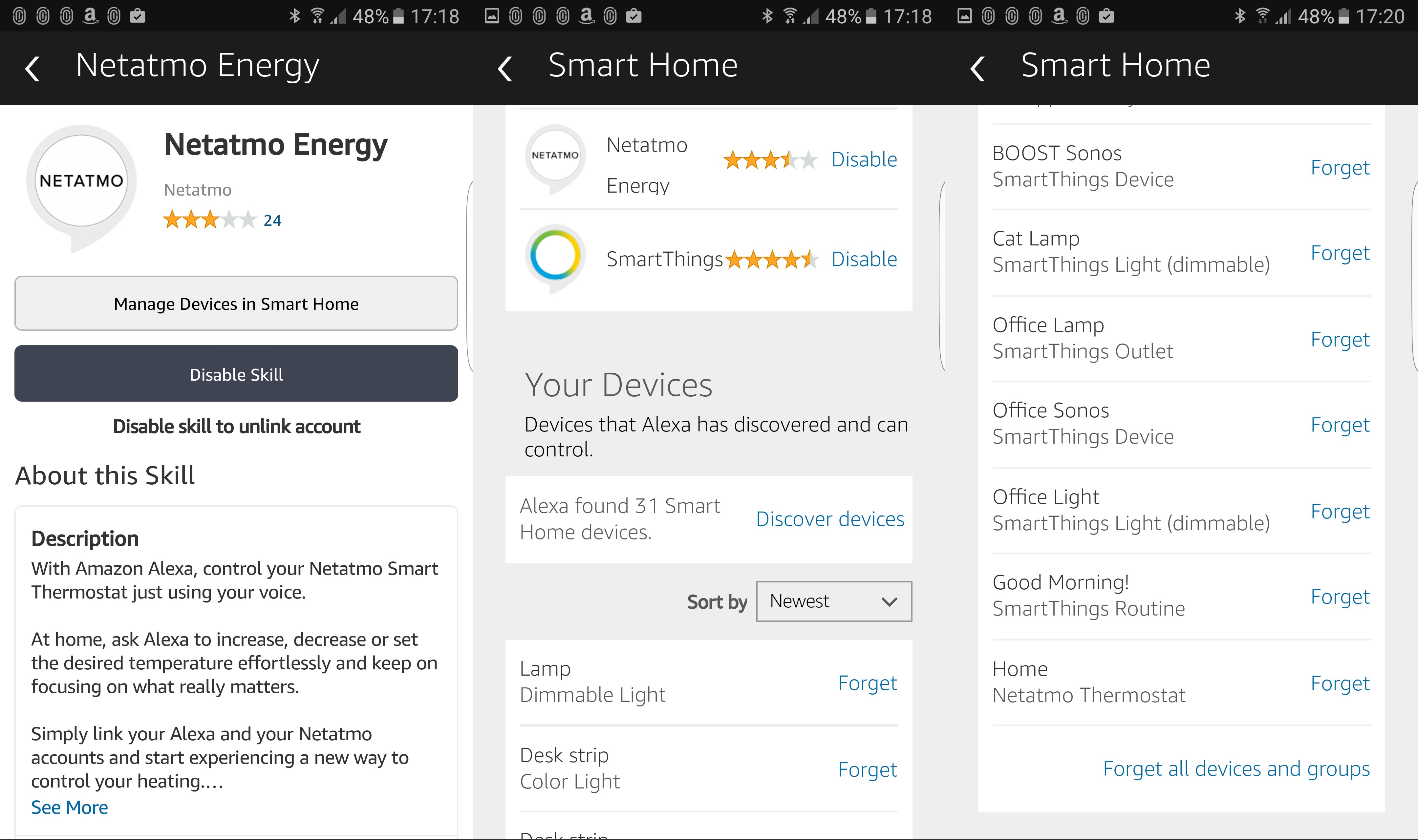
Related: Amazon Echo review
Should I buy the Netatmo Smart Thermostat?
Netatmo’s Smart Thermostat is one of the cheapest available, yet it has all of the features that I’d expect, plus Echo, Google Home and HomeKit integration. An app that occasionally stops responding and the lack of integrated geofencing are a little disappointing. The addition of the Smart Radiator Valves is good for existing Netatmo users, but the clunky scheduling and poor Alexa support are disappointing.
The competition is also tough. The more expensive Tado Smart Thermostat has the same range of features, but I prefer its app, plus it has brilliant geofencing. For a more advanced, room-by-room system, the Honeywell Evohome is excellent.
Verdict
Easy to set up, with plenty of expansion options – the Netatmo Smart Thermostat offers excellent value.


